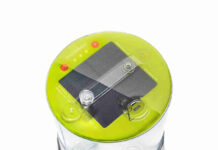
Frontiers of research are rapidly exceeded. Even in field of solar energy harvest and conversion efficiency, new research ideas come from everywhere.
The scientists from Swiss Federal Institute of Technology known as ETH Zurich bring attention on nanotechnology and nanomaterials again. They believe that conversion efficiency could be increased from the current conversion rate of only 20 percent. They are exploring nanotechnology and the possibility of hydrogen production directly from solar energy.
They are studying tiny little structures smaller than wavelength of the light to convert it into energy. The most important problem in conversion efficiency is the presence of so called “hot electrons”. What is about?
Sunlight hit the semi-conductor material and result electrons charge carriers and an electric current is generated. The wavelength of light affects the amount of generated power and most efficient conversion is at wavelength of 1000 nanometers or by infrared light. ETH researches observed that if the wavelength is shorter, generated by daylight, the electrons carry an extra jolt of solar energy -making them “hot”. They “cool off” letting the extra solar energy go, leaking off, and in a few time as billionths of a second, this extra energy sticks around, only heating up the solar cells.
This phenomenon is bad for conversion efficiency in two ways, adds more heat to solar cells and means that in fact a part of the energy is lost.
The ETH Zurich team has the idea to retain the electron’s extra energy keeping them hot after left solar cells and to retain their energy. To accomplish this goal the team uses structures of nanomaterials made by lead selenide coated with titanium dioxide to expand the energy band-gap. This way the electrons must jump across within the nanomaterials. Through larger gap the electrons are forced to keep the energy to pass the barrier.
According to David Norris, professor in the Department of Mechanical Engineering and Technology and member of ETH Zurich Team “Hot film solar cells would be the ultimate solar technology,” He underlined that “66% conversion efficiency is the theoretical upper limit.”



